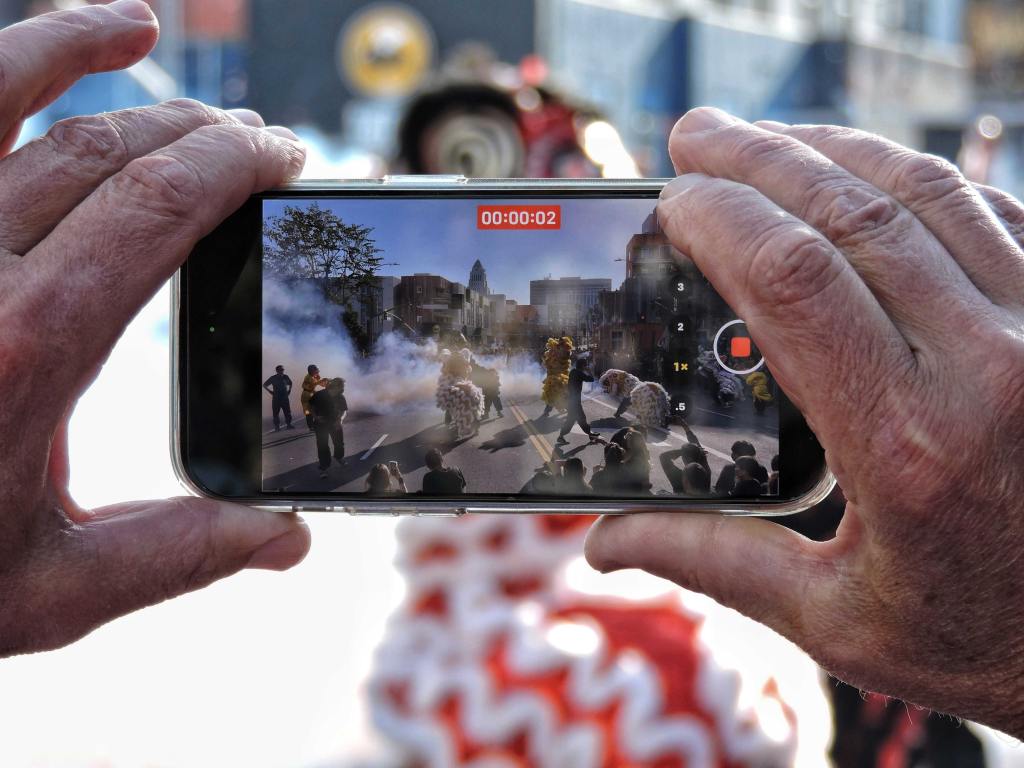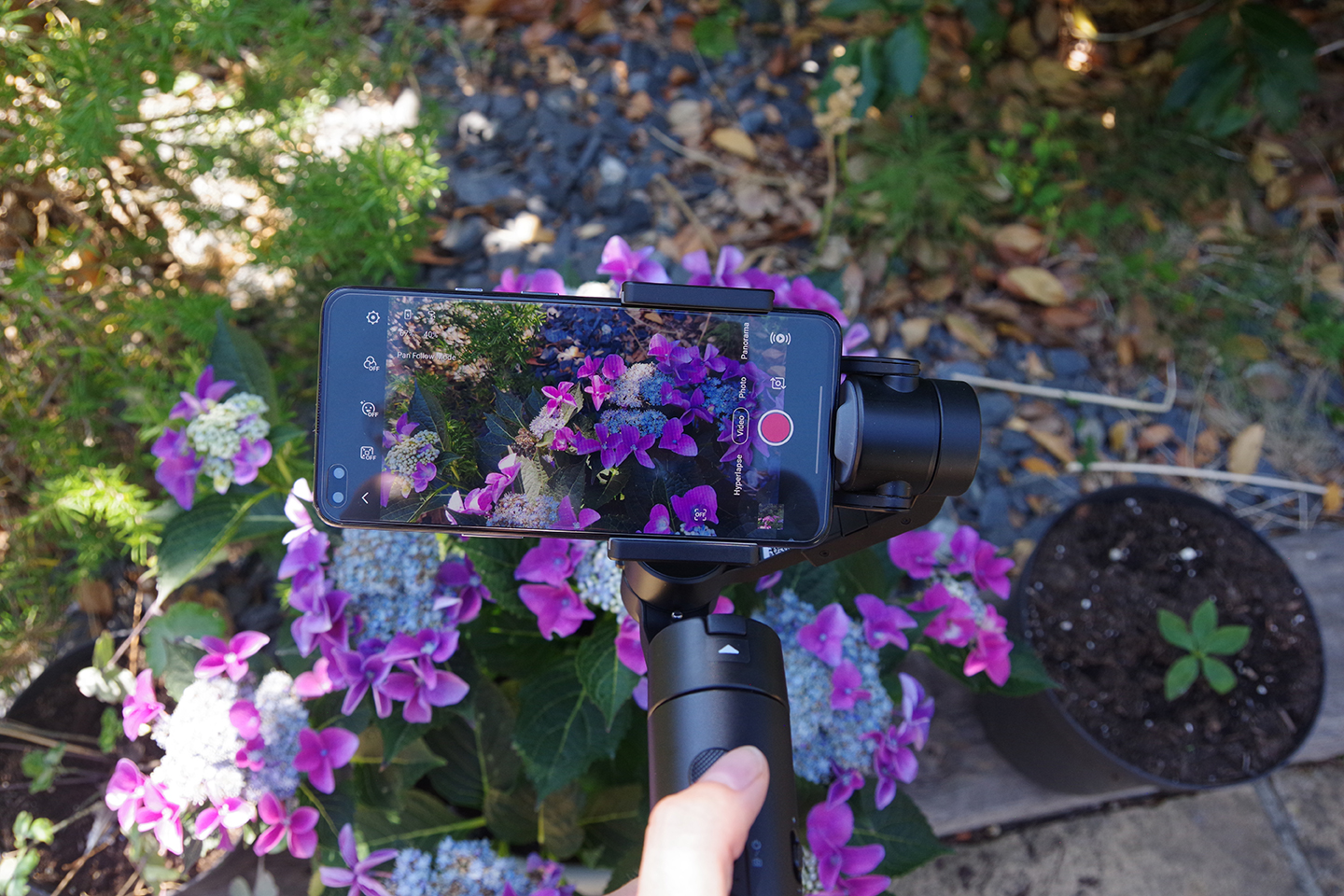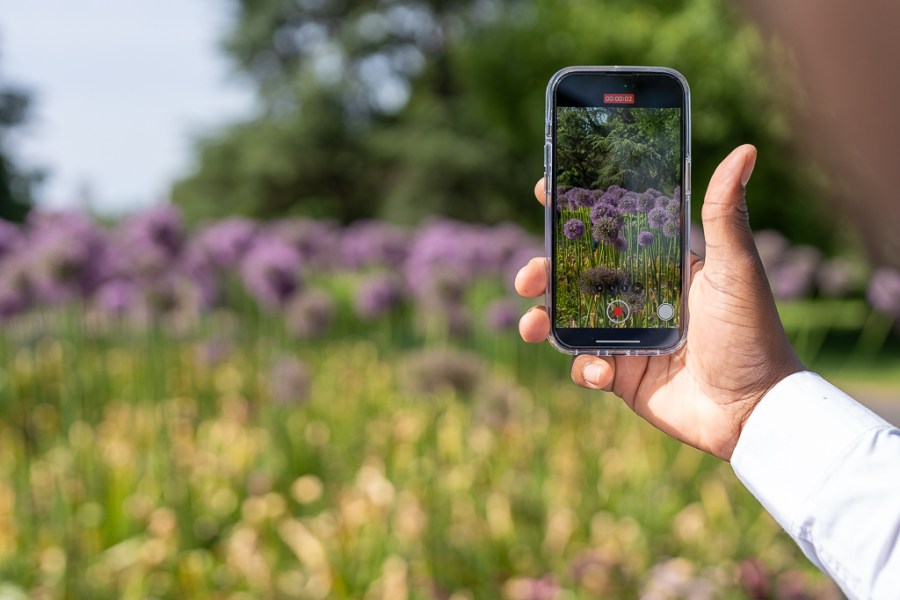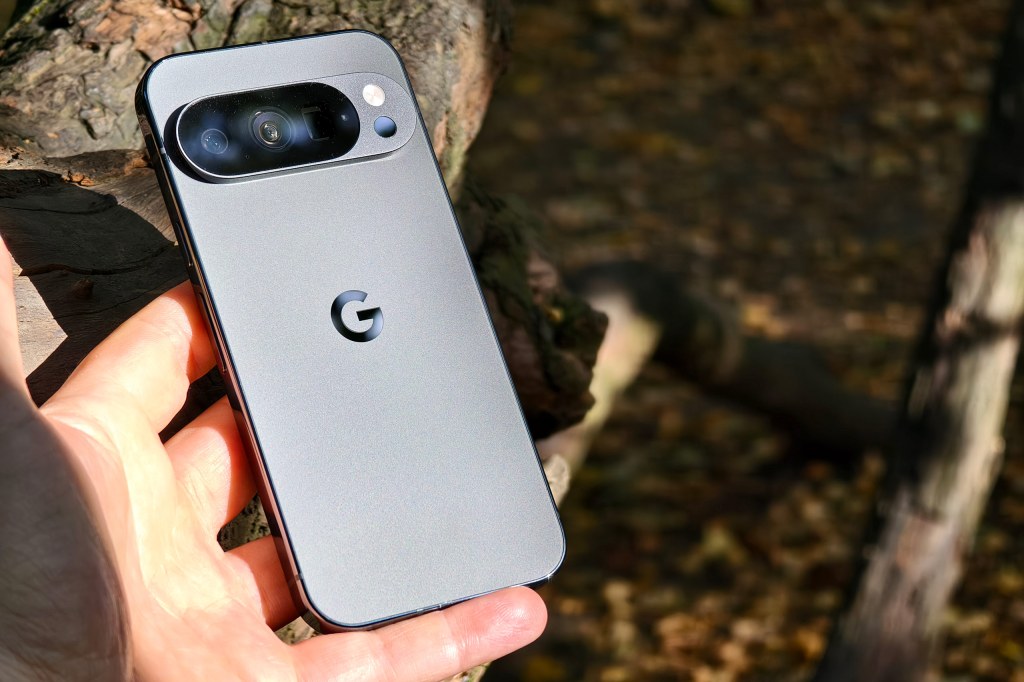When choosing the best smartphone for video, options are more plentiful than ever. These days, phones don’t just shoot video at high resolutions, they also provide pro-video features like optical stabilisation, high-frame-rate slow-motion, Log colour profiles, and more. You can capture top-quality content on smartphones; many people do. The key is in finding the right phone.
At AP, we take smartphone imaging very seriously. We review all the latest phones from Apple, Google, Samsung and others as they are released, and often pit them against each other in head-to-heads to figure out which ones are best. The phones on this list represent the top picks as tested by our technical team, and come with our experts’ view on their price value – as far as their cameras are concerned.
Read on as we count off the best smartphones you can buy for videography right now or scroll to the bottom on useful tips on how to choose the best smartphone for video. For more buying advice on phones, check out our guide to the best phones for low light, macro and portraiture. Or save some cash with our rundown of the best budget camera phones.
Looking for the best deal on smartphones for video? Not only will you find the best phones for video, but also some of the best deals, as our ‘Buy now’ buttons are set to automatically take you to the best prices from trusted retailers. You’ll also find a list of other retailers below each phone, so you can find the right deal for you.
The best smartphones for videography in 2025
- Google Pixel 10 Pro – Buy now
- Apple iPhone 16 Pro Max – Buy now
- OnePlus 13 – Buy now
- Samsung Galaxy S25 Ultra – Buy now
- Sony Xperia 1 V – Buy now
Best budget smartphones for video
How we test phones
We review smartphones from the perspective of choosing one for its photography and camera performance. We look at what the Google Pixel 9 Pro XL offers, and the features included for photography and video, paying particular attention to the cameras on the phone, photo editing capabilities, as well as the output from each different lens, and features offered.
Read on to learn more about the best smartphones to buy for videography, and our useful tips on how to choose the best smartphone for video at the end of this article.
The best smartphones for videography in 2025
The best smartphones for video are always changing, but the models listed below are the most capable and versatile options you can buy right now.
Google Pixel 10 Pro
Amateur Photographer verdict
The 10 Pro offers some of the best cameras and shooting features on a camera phone.- Excellent camera setup with effectively 5 rear cameras
- Lovely colour production
- Only 128GB on base model
- Video boost is more con than pro
- Camera bump makes it chunky
The latest and greatest in Google’s range of Pixel phones. As with its predecessor, the Pixel 9 Pro, Google plug this model for its 8K video recording. However, this resolution is not available in-camera itself. In reality, you need to switch on “Video Boost” first, record your video and upload it to the cloud for “boosting” to 8K quality footage in return. And, by the way, you’ll need enough space on your Google account (naturally, you can pay Google more to upgrade it). Video boost can be used for things such as additional stabilisation when zooming.
Video mode offers pan, blur, standard video mode, night sight, slow motion, and time lapse. Additional options include a speed enhancement option, audio zoom, and video format options. You’d need to switch on Video boost to enable a flat video mode.
Video is actually recorded with HDR+ automatically applied for expanded dynamic range (when using the main wide camera). In detail, colour, and stabilisation, it all looks good. We did notice a slight hiss on the audio though, even in quiet environments. The highest resolution and frame rate the phone itself can record is 4K at 60fps. You can not record 8K video on the phone, and there is no 4K 120fps option. You can also use up to 20x zoom in video, but the quality is poor, as you’d expect, but can be improved using the Video Boost feature.
For all of its end product quality, note that Video boost takes AGES to process and return – a 10 second clip I recorded for 8K upscaling took about 3 hours to be returned. A 45 second clip recorded for general boosting took around 8 hours. For genuine 8K video recording, we prefer a phone that does it in-camera, like the Samsung Galaxy S24/S25 Ultra.
Read our Google Pixel 10 Pro review.
Apple iPhone 16 Pro Max

Amateur Photographer verdict
Its zoom capability and next generation portrait mod sets it apart from from the competition, although the updates from its predecessor are fairly gentle.- Large screen
- Gorgeous display quality
- Camers control button
- Low resolution telephoto camera
- Low resolution selfie camera
Video specs:
- 4K 120fps Dolby Vision video recording
- 4K HDR 30fps Cinematic mode
- Spatial Audio and stereo recording
- ProRes
- Log video recording
Camera specs:
- 48MP (wide), f/1.78 aperture, 24mm, dual pixel PDAF, sensor-shift OIS
- 48MP (ultrawide) f/2.2 aperture, 13mm, dual pixel PDAF
- 12MP 5x (telephoto,) f/2.8 aperture, 120mm, 3D sensor-shift OIS and PDAF
- 12MP (selfie) f/1.9 with AF
If you’re looking for the best iPhone for video, this is unquestionably it. While it’s not greatly different from the previous iPhone 15 Pro Max, and those looking to save themselves some cash may want to consider an older model, the iPhone 16 Pro Max iterates on a winning formula to deliver an absolutely outstanding smartphone for video – though it commands a high price.
While the triple-camera array may look quite familiar at first glance, the big addition is the overhaul of the ultrawide lens, which is now a 48MP f/2.2 aperture lens offering a 13mm equivalent field of view. If you go all the way from the ultra-wide to the end of the telephoto, you’ve effectively got a 10x optical zoom at your disposal, and that provides a huge amount of compositional flexibility for the smartphone video shooter. It inherits the same Log shooting profiles from the iPhone 15 Pro Max, a flat colour profile that delivers the maximum amount of dynamic range to provide as much latitude as possible for the colour grade.
With the dedicated Camera Control Button, you can record with a long press and zoom seamlessly by dragging your finger across. The bigger, 6.9inch screen can make it easier to record, review and edit videos. Elsewhere, frame rate was improved from 4K 60p to 120p allowing for more creative slow-motion recording. It also includes a studio-quality four-mic array with built-in noise reduction and Audio an Mix feature. Thanks to the improved internal design, it manages heat more efficiently, while the bigger 4,685mAh battery makes it ideal for longer video recording and editing too.
Other features that have already made iPhones popular for video – effective stabilisation, ‘Cinematic’ shooting mode, Dolby HDR, Apple ProRes, and plenty more. As long as it’s within your budget, you really can’t go wrong with Apple’s latest smartphone.
Read our Apple iPhone 16 Pro Max review here.
OnePlus 13
Amateur Photographer verdict
A well-performing model with improvements in cameras, giving excellent image quality across various conditions.- Good value flagship
- Pro mode
- Hasselblad portrait modes
- Excellent battery life
- Fairly short telephoto lens
- Raw shooting only in Pro mode
- Selfie camera fixed focus only
Video specs:
- 8K at 24fps
- 4K at up to 60fps
- 1080p video at 30/60 fps
- 720p video at 30/60 fps
- HDR at 1080p 30fps
- Super Slow Motion: 1080p video at 240 fps, 720p video at 240/480 fps
- Time-Lapse: 4K/1080p at 30 fps
Camera specs:
- 50MP f/1.6 23mm equivalent 1/1.43” Sony camera, OIS
- 50MP f/2.0 15mm equivalent 1/2.75” Sony camera
- 50MP f/2.6 73mm equivalent 1/2” telephoto camera
- 32MP f/2.4 selfie camera, fixed focus
- Macro capability
- Price: from $700 (256GB) / from £749
If you crave extra resolution, the OnePlus 13 is one of the few smartphones on this list that is capable of 8K video recording. Now, you might think you don’t need 8K resolution – and 8K video will eat your memory cards and hard drives – but many videographers like to shoot in 8K to create higher quality down sampled 4K footage. This can be a real advantage.
The OnePlus 13 is equipped with a 50MP main camera, a 50MP ultrawide camera, and a 50MP telephoto camera, giving you a wide range of options to achieve your desired image quality and composition. It also comes with a 32-megapixel fixed focus front-facing selfie camera, which may put some people off due to the lack of auto-focus.
The OnePlus 13 also offers a range of other features that make it a great choice for videographers. Both its 50-megapixel wide (main) and 50 megapixel telephoto cameras feature impressive OIS (Optical Image Stabilization) to help reduce camera shake and create smoother, more professional-looking footage. There are also a number of different video modes, such as Video Nightscape, Video HDR, Video Portrait, Timelapse and Dual-View video that make filming different subjects and scenes easier.
Samsung Galaxy S25 Ultra
Amateur Photographer verdict
Simply put, its the best Android camera phone on the market right now, with AI-powered features, 8K video for serious videographers and a 12 MP selfie camera with 4K recording capability and autofocus- 3x high resolution sensors
- Excellent screen
- Added AI features
- Reflection removal particularly useful
- Macro mode still not the best
- Fairly minor camera upgrade from last model
- S-pen no longer works as remote
Video specs:
- 8K 30/24fps video
- 4K 120/60/30fps
- 1080p at up to 240fps
- 720p at up to 960fps
Camera specs:
- 200MP wide camera, 24mm, f/1.7, 1/1.3” sensor, PDAF, OIS
- 50MP ultrawide camera, 13mm, f/1.9, PDAF
- 10MP telephoto camera, 67mm, f/2.4, 1/3.52” sensor, PDAF, OIS, 3x optical zoom
- 50MP periscope telephoto camera, 111mm, f/3.4, 1/2.52” sensor, PDAF, OIS, 5x optical zoom
- 12MP f/2.2, 26mm selfie camera with AF
The S25 Ultra is Samsung’s latest flagship smartphone, packed with a raft of AI-powered computational features. You can use AI to generate intermediate frames for an already recorded video and create slow-motion footage and improve audio quality. Just like its predecessor, the Samsung S24 Ultra, this is an absolutely outstanding Android smartphone for serious videographers. The 12 MP selfie camera has 4K recording capability and autofocus which is extremely useful when vlogging or recording.
One key upgrade from the S24 Ultra is that the ultrawide camera now features a 50MP sensor, rather than the 12MP sensor. Elsewhere, the screen remained the same, very generous 6.9inch, great for recording and editing video, especially with its very thin bezel and an anti-reflective coating which reduces reflections and glare very successfully.
It records video in 8K just like the S24 Ultra a feature we have only seen in a handful of smartphones. However, simply offering this feature doesn’t necessarily make the Galaxy S25 Ultra the automatic ‘best’ choice for videographers – most people simply don’t need this level of resolution. There’s also an argument to be made that results are overall better at 4K or even Full HD anyway, as shooting in 1080p allows you to take advantage of Samsung’s Super Smooth Stabilisation for gimbal-like footage. Still, it’s hardly like we’re going to criticise a phone for having too many options, and the Galaxy S25 Ultra really is an impressive technological achievement.
Read our full Samsung Galaxy S25 Ultra review.
Sony Xperia 1 V
Amateur Photographer verdict
Pro mode and 30 fps shooting will help you capture that decisive moment without a hitch. However, the flagship price can be a deterring factor for some.- Good manual control
- RAW shooting
- Takes Micro SD card
- 30 fps
- No proper portrait mode
- No macro mode
- Pricey
Video Specs:
- 4K HDR at up to 120fps
- 1080p at up to 120fps
- 5-axis gyro-EIS, OIS
Camera Specs:
- 52MP (48MP effective) wide camera, f/1.9 aperture, 24mm equivalent, PDAF, OIS
- 12MP ultra-wide camera, f/2.2 aperture, 16mm equivalent, PDAF
- 12MP optical zoom telephoto camera, f/2.3-f/2.8 aperture, 85-125mm equivalent, PDAF, OIS
- 12MP f/2.0 selfie camera, 24mm equivalent, fixed focus
The Sony Xperia 1 V is one of the best smartphones for video you can buy today and comes with some truly impressive features. Firstly, it has a 6.5-inch, 4K HDR OLED display with 10-bit colour in a 21:9 aspect ratio, which is great for viewing videos in cinematic widescreen. Videos look incredibly vibrant and clear.
Secondly, this smartphone has three rear cameras, including a 52MP main lens, a 12MP telephoto lens, and a 12MP ultra-wide lens. These pixel counts might seem low on the surface, but the sensors perform very well in low light, producing noise-free images with a wonderful range of tones. What’s more, the choice of three lenses includes 16mm, 24mm, and the telephoto option provides a true optical zoom of 85-125mm. This allows for versatile shooting options and the ability to capture wider scenes.
All three cameras offer 4K HDR 120fps video recording, Eye AF and Object tracking, which makes focusing a breeze. The Xperia 1 V is also capable of live-streaming video direct to video streaming services from your phone using Sony’s Videography Pro app.
Thirdly, the Xperia 1 V also comes with features such as SteadyShot stabilization and an AI-assisted autofocus system, both of which will help videographers get the best out of their footage. Finally, it is powered by the Qualcomm Snapdragon 8 Gen 2 processor, which provides smooth performance when editing and viewing footage.
Read our Sony Xperia 1 V review.
Best budget smartphones for video
Need something a little more affordable? If you’re willing to look for an older smartphone, there are some fantastic budget options out there which still create fantastic video. Here are a couple of our favourites.
iPhone SE
Video Specs:
- 4K at up to 60fps
- 1080p at up to 240fps
- HDR
- OIS
- Stereo sound recording
Camera Specs
- 12MP, f/1.8 (wide), PDAF, OIS
With a sub-£500 price tag, the iPhone SE is a great budget option for videography. Not to mention its powerful A15 Bionic Chip, high-quality camera and excellent battery life. The Apple-developed A15 Bionic Chip provides a powerful processor that allows for smooth streaming and editing of videos without experiencing lag or stuttering.
Meanwhile, the SE’s lone 12-megapixel camera may look pedestrian in comparison to Huawei’s quad-camera arrays or the 108MP offerings from the likes of Samsung. All of this this aside however, its 4K footage is crisp, noise-free and full of rich colours.
What’s more, the device has excellent battery life. It can last for up to 15 hours of video playback on a single charge. This makes it perfect for long shoots and editing sessions. If you’re looking for a powerful, user-friendly device that can handle your everyday video needs without breaking the bank, the iPhone SE is a solid option.
Google Pixel 8 Pro
Amateur Photographer verdict
Excellent hardware and advanced software, the Pixel 8 Pro took what the company had already done with its existing models and improved it even more.- Three high-resolution sensors
- Computational magic makes images pop
- Pro control option
- Price hike from previous model
- No 1TB storage option
Video specs:
- 4K at up to 60fps
- 1080p at up to 240fps
- gyro-EIS, OIS
- 10-bit HDR
Camera specs:
- 50 MP, f/1.68, 25mm (wide), 1/1.31″, multi-directional PDAF, Laser AF, OIS
- 48 MP, f/2.8, 113mm (telephoto), 1/2.55″, multi-directional PDAF, OIS, 5x optical zoom
- 48 MP, f/1.95, 125.5˚ (ultrawide), 1/2.9″, AF
The Pixel 8 Pro offers a number of clever features that make it our pick for the best smartphone for video. Now that it has been superceded but the Pixel 9 Pro (and its XL big brother), expect to see its price drop progressively.
The basics of its triple-camera array are of course rock solid – built around a 50MP main wide camera with a generous f/1.68 lens, as well as dual 48MP cameras offering ultra-wide and telephoto perspectives. With a beautiful 6.7” Super Actua LTPO OLED, Pixel 8 Pro handles brilliantly, and feels like a premium phone to use.
For video output, the Pixel 8 Pro shoots 4K resolution at up to 60p. While some users might decry the lack of an 8K option, the reality is that most users simply do not need it. Google has instead gone all in on the computational, AI-powered wizardry that has started to become something of a hallmark for the Pixel series, enabling modes like Night Sight, which optimise image quality for low light.
For video shooters specifically, a recent Pixel 8 Update has introduced Video Boost mode, which automatically kicks in Night Sight, HDR+ and Unblur in order to deliver the best-quality video possible (bear in mind that this won’t work with locally saved files; your video needs to be backed up to Google Photos in order for it to work).
A brilliant phone for video, delivering better value for money than most of its serious rivals, the Google Pixel 8 Pro is our pick for the majority of users.
Read our Google Pixel 8 Pro review.
How to choose the best smartphone for video

While just about every phone these days will record video (apart from Nokia’s throwback ‘90s models), the best smartphones for video will primarily be the flagship models from big brands such as Apple, Sony, Samsung, Google, Huawei, and a handful of others.
In addition to these brands’ flagship models, their mid-range models also typically boast excellent videography capabilities, because a manufacturer’s signature technology tends to trickle down the range over time.
What’s more, for the truly budget conscious, some brands like OnePlus and Motorola have launched low-end models that offer no frills in some areas (e.g. screen size or resolution), but include quality cameras and video capabilities. The OnePlus Nord and Motorola G series are prime examples.
How much does the best smartphone for video cost?
Prices vary by brand, of course, (we’re looking at you, Apple), and by country. But the average price of a high-end smartphone with solid video capabilities is around $600-1000 / £600-1000, depending on the model and features. Obviously, for flagship models, you will pay out at the upper end of that range. But you can still find good-quality smartphones for videography at the lower end.
Looking for more info on how to start shooting video?
Smartphones have established themselves as the ultimate carry-around camera, and there are currently a lot of good camera phones out there – even budget options! Amateur Photographer has covered it numerous times, so you’ll find lots of video articles on this website, but here are some of our top ones that we think you should have a look at. Simply click the titles below.
How to make a great video recording with your camera

Video your life like a Wes Anderson film

Best tripods, mounts and gimbals for smartphones

Related articles:
- Using smartphones for street photography
- How to take amazing portraits on a smartphone
- Best cameras for video, vlogging, and videography
- Best camera phone accessories for photography and video












